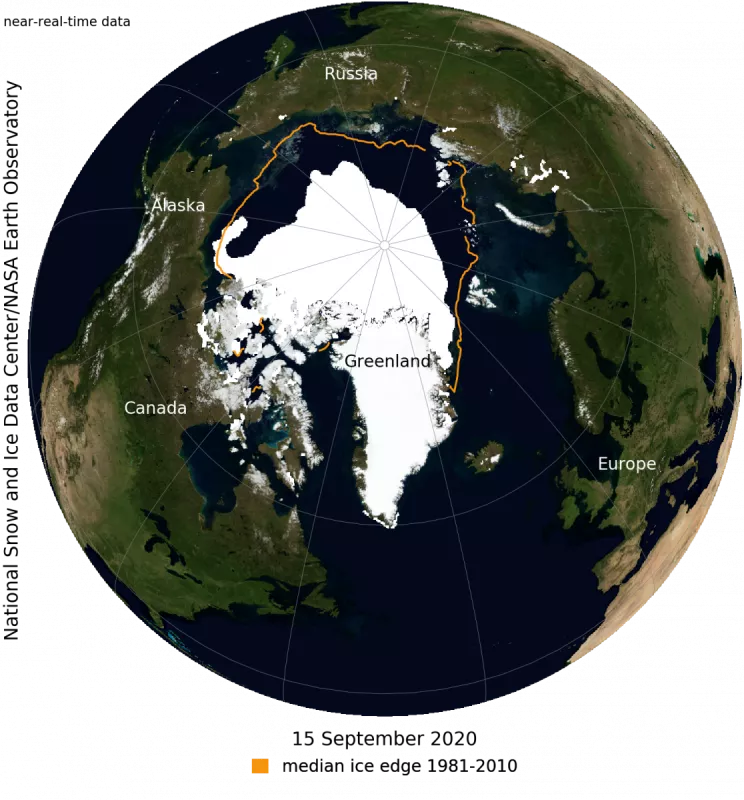Arctic sea ice has likely reached its minimum extent for the year, at 3.74 million square kilometers (1.44 million square miles) on September 15, 2020, according to scientists at the National Snow and Ice Data Center (NSIDC) at the University of Colorado Boulder. The 2020 minimum is the second lowest in the nearly 42-year satellite record.
“It's been a crazy year up north, with sea ice at a near-record low, 100-degree (Fahrenheit) heat waves in Siberia, and massive forest fires,” said Mark Serreze, director of NSIDC. “The year 2020 will stand as an exclamation point on the downward trend in Arctic sea ice extent. We are headed towards a seasonally ice-free Arctic Ocean, and this year is another nail in the coffin.”
Please note that the Arctic sea ice extent number is preliminary—continued melt conditions could still push the ice extent lower. NSIDC will issue a formal announcement at the beginning of October with full analysis of the possible causes behind this year’s ice conditions, interesting aspects of the melt season, the set up going into the winter growth season ahead, and graphics comparing this year to the long-term record.
NSIDC is part of the Cooperative Institute for Research in Environmental Sciences (CIRES) at the University of Colorado Boulder. The NSIDC Sea Ice Today is supported in part by NASA.
For more details and images, please see the NSIDC Sea Ice Today page.
Read the NASA feature here.
